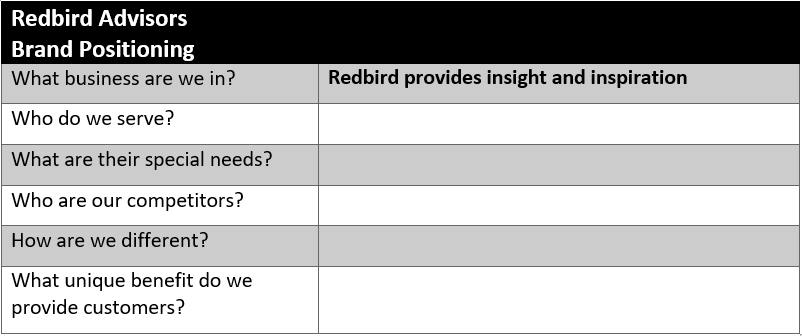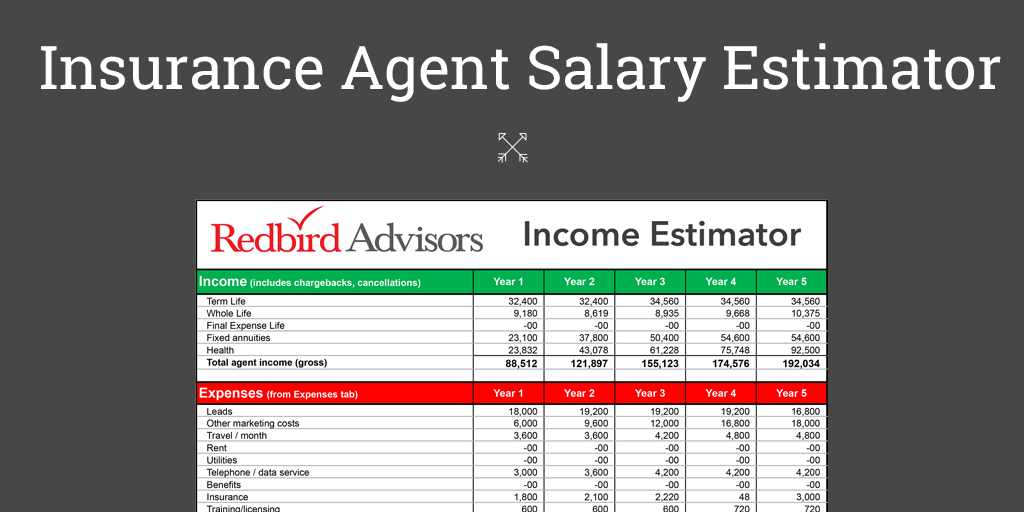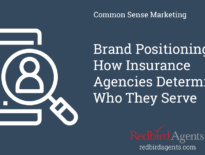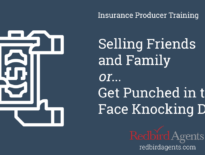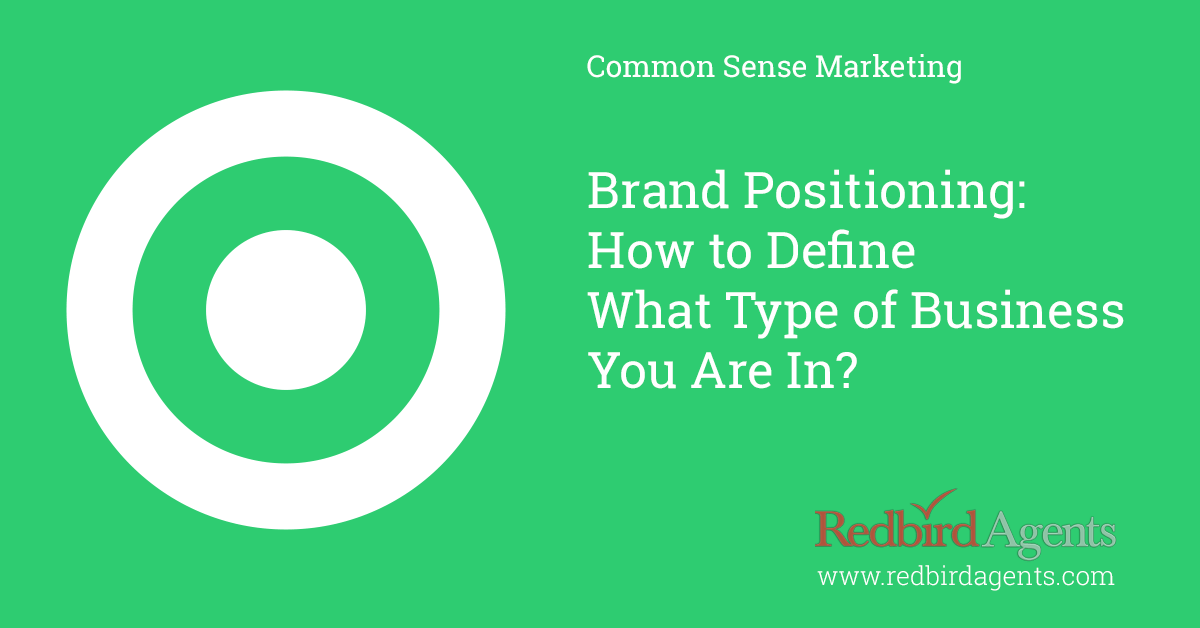
Editor’s note: Our previous article on creating a brand positioning statement for your insurance business defined the six core questions you must answer to define your unique spot in your market.
This article focuses on the first of those six: What business are you in?
You Want to Be Successful? Give Customers What They Need, Not Just What They Will Buy.
Building a brand is a mystery to the most business owners, insurance or otherwise. It’s not that they don’t believe it’s important… it’s that they don’t know where to start.
So, many simply do nothing.
This series should be a ray of hope for any insurance carrier executive or agency owner interested in creating competitive advantage.
The type of insurance you sell is not a brand advantage. If you’re selling electric cars, it might be, but for insurance and most other products, you must reach beyond “what” you sell and define “how” what you sell benefits customers and helps you build a distinctive spot in your market.
Building a brand is a challenging exercise… but worth every minute if you do it right.
Let’s start at the beginning: What business are you in?
Define the Unique Spot in Your Market for Your Business.
Finding a unique spot in the insurance market is hard, but not impossible.
We found an interesting story about a small coffee shop in Davidson, N.C. Summit Coffee that demonstrates the breadth of ways you can define your business beyond simply what you sell.
Summit is a fixture in this small college town. It had applied for a small business grant that required entrants to describe their business. Here’s how Summit answered:
“We are a coffee shop. We are a bar. A music venue. A meeting place. A day care. An office. A bathroom. A water break.”
“We are Davidson. We are Main Street. We’re old and rustic. Modern and creative.”
“We are good morning, good afternoon and good night.”
“We are Tim and Beth. Becky and Dave. Alex and Jesse. Chris and Jim and Michael.”
“We are a neighbor. An escape. A welcoming. A friend. A Thank God it’s Friday at 5:00. A large coffee no room for cream… right?”
“We are home.”
“We are Summit. We are lucky.”
Only once in all those descriptions was coffee mentioned, and that was only because it was making the point that their people remember the type of coffee their customers like.
What in the Sam Hill Does Coffee have to do with Selling Insurance?
Another coffee company you might have heard of figured out its unique spot before it ever opened its first store.
“While we are a coffee company at heart, Starbucks provides much more than the best cup of coffee. We are a community gathering place where people come together to connect and discover new things.”
Howard Schulz, ex-Chairman, Starbucks
Schulz had a vision for a new customer experience that played to some of our most basic needs: the need to be part of a community… to be around people we enjoy.
He didn’t just want to be another coffee shop.
What attracts us to Starbucks? The quote of the day on the side of the cup. Or, having a quick conversation in line with the people we see every day. Maybe it’s talking to the baristas. Or, maybe it’s just having the cup in your hand at work so everyone else knows you go there.
Starbucks found an unmet need and never looked back.
Think Like a Customer to Find Your Unique Place.
The previous article on the components of a brand positioning talked about the difference between a brand position and a brand positioning.
A “position” is who you are. It’s backward looking. It’s what the market knows based on its experience and your performance. It defines you based on where you’ve been, and it may or may not be an accurate reflection of what you want the marketing to believe.
A “positioning” is who you want to be. It’s aspirational, specific and, if done correctly, powerful.
Allstate’s “good hands” campaign is one of the most successful in history. It not only shows customers the multitude of situations where insurance can help them, often in a humorous way, but it reinforces a core competency that is critical for Allstate: customer service.
“Good hands” is an ad slogan that is backed up by a thoughtful, targeted and specific brand positioning statement.
Cute Taglines (or Small Animals) are Nice, but Customers Need a Reason to Choose You.
Many of you—cancel that, most of you—define your business by what you sell. While important, that’s likely not enough for a potential customer to pick you out of a crowd.
How did Summit come up with all those attributes? Its team members likely went through an exercise that challenged their thinking beyond coffee.
First, they had to think like a customer. Put yourself in your customers’ shoes and answer these:
- Why am I buying insurance? (Possible answers: protection for my family, security, my peace of mind, my family’s peace of mind)
- What am I looking for in an agent? (Possible answers: they’re local, friendly, trustworthy, smart, honest, timely, encouraging, creative, thoughtful)
Second, answer these from your perspective, keeping in mind what might be compelling for customers:
- What is insurance? (Possible answers: safety, smart, financially wise, something you love)
- What is your function? (Possible answers: sales person, creator, collaborator, organizer, friend, informant)
- How do I want my customers to feel after working with me? (Possible answers: satisfied, delighted, relaxed, comforted, enthused, safe, secure)
- What would I like my customers to say about me to a friend? (Possible answers: He did what he said he would do. I was surprised at all the options he showed me. He made me feel comfortable. I understand what I’m buying regarding insurance for the first time ever.)
Somewhere in these answers is the beginning of a definition of what you do.
We Eat What We Catch: Redbird Positioning is a Work in Progress.
All brand positioning statements are a work in progress. Markets change. Management changes. Mistakes are made.
It’s business.
As we go through each of the six steps to help you create a brand positioning statement, we will use Redbird’s brand positioning as an example to help you create your own.
Getting Google to Become Our Friend Became the Goal.
Redbird began as an independent agency focused on final expense life insurance. Today, Redbird is a consulting firm helping insurance agencies create digital strategies and capabilities (and, we still find time to sell a little bit of insurance).
When we started Redbird Advisors, we were absolutely sure the next wave of growth in the insurance business was going to come through the internet. We began regularly publishing content for agents, knowing it was the right thing to do, but not knowing exactly how to leverage it through the internet.
But, intuitively, we knew that publishing compelling, valuable content would work in our favor.
Little did we know that almost 10 years later Google would be one of our greatest admirers.
KISS: Adding Value for Customers is Job One.
Today, we feverously publish content under the Redbird brand and several brands—blogs, articles, eBooks, guides, etc.—and have discovered that what we thought was so mysterious years ago about the internet is no more than a new, faster way to do what businesses have been doing for centuries…
Adding value for customers.
So, how does that translate into helping you define your business?
It’s all about your target audience (to be covered in detail in the next article). As we transitioned from a retail agency selling life insurance to a consulting firm, our target audience transitioned from agents in the field to insurance carriers and agency owners.
These “owners”—senior managers/owners of insurance carriers, and executive of insurance carriers—are fully aware that the internet is where much of their future growth will come from. However, they don’t know how, and they don’t know where to start.
Here’s the key: every “owner” client we’ve helped over the last five years has said they wanted us to help them do what we do.
They didn’t just want us to do it for them.
Bingo.
Redbird Sells What Clients Want: We Teach Them How to Fish.
So, what business are we in? Marketing? Advertising? Technology? Insurance?
We sell all of those, but that’s not what clients want.
They don’t want us to give them a fish, they want us to teach them how to fish.
Translated: we sell insight and inspiration, not marketing, advertising or technology. To be more precise, we want to be the impetus for clients to take the next step, and then take control of their own destiny.
So far, it’s working.
As we construct our positioning in the following five articles, you will more clearly understand the importance of this first component. Stick with us and please let us know what you think.
